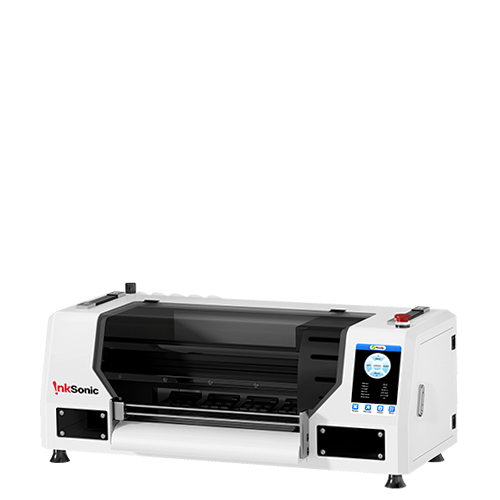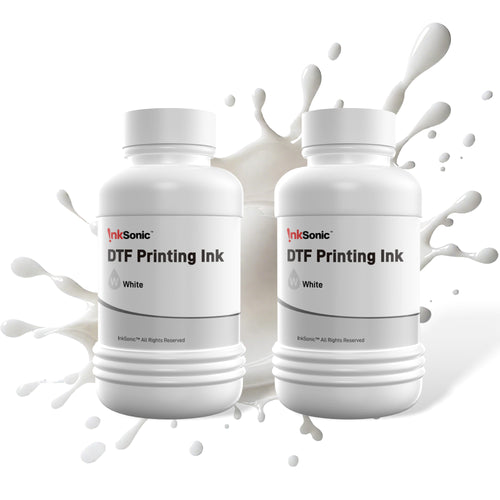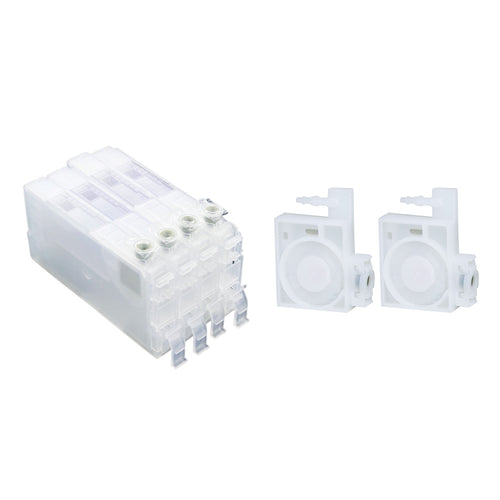In the fashion world of today with personalization, e-commerce and on-demand manufacturing re-shaping the fashion industry, then garment printing is the revolution. Whether you’re a fashion designer who is developing a new collection, a brand that wants to offer some custom merchandise, a start-up that is stepping into the lucrative field of the growing print-on-demand industry, having the right apparel printing solution is the key to success.
In this guide, we’ll explore:
What an apparel printer is
How it works
The types of printers available
Which ones best suit your business goals
Let’s dive in and discover how apparel printing can elevate your brand in the age of customization.

1. What is an Apparel Printer?
An apparel printer is a high-tech computer printer used to print quality graphics and designs onto materials or clothing. It differs from other processes, such as screen printing, in that it utilizes high-end digital printing technology to deposit ink directly on fabrics.
The 2025 fashion print scene is reshaped by fervent innovation and growing demand for sustainability. AI-empowered design-to-print automation is streamlining workflows—AI is now integrated into platforms like Printify and Gelato to optimize print design, reduce design errors, and slash production time by up to 30%, writes Apparel Resources in 2025.
The t-shirt printers of today don’t require mass production, minimums, nor a large lead time, as they did with screen printing. There are a variety of digital printing methods to consider, each with their own advantages and disadvantages depending on the fabric type, your budget, and the scale of production. If you run a new or small business looking to get into the custom apparel industry, then a DTF print would arguably be your best option as it requires less initial capital without being locked into a single design.
2. What Type of Products Can an Apparel Printer Print?
They’re extremely versatile and can print on nearly any type of garment or fabric – tshirts, polos, shoes, socks, hats, gloves, custom ties, custom pillow casings, and the list goes on!
When it comes to most printed clothing, the tees and hoodies are at the top of the list serving the purpose of small printed orders, branded products, or personal customised gift.
Logos, slogans, or elaborate graphic designs can also be printed directly on hats and caps for most any occasion or promotional campaign.
Performance Wear: Apparel printers can produce sportswear patterns like leggings, recreation jerseys, or exercise tops for activewear that need to have elasticity and strength in performance fabrics. The printers can be utilized by businesses interested in making branded or artistic bags and accessories like tote bags, canvas pouches and backpacks.
The items are not limited to clothing, but also include home textiles, like pillowcases, cushion covers, blankets and bed linen, could be customized with colorful patterns or private messages, making them not only clothing decorations but a lifestyle.

3. Businesses Best Suited for Apparel Printers
Apparel printers are an excellent investment for a wide variety of companies that want to offer bespoke, high-quality textile products. They are ideally designed for various business types including:
- Fashion & Apparel: Fashion designers and clothing brands can produce limited edition lines and collaborate with artists to design or personalize clothing such as one off looks and more.
Sports Wears: Ideal for Name, Number and Logo on football, basketball, and other school team jerseys, uniforms, and training and leisure wear for school teams, local clubs, and professional athletes.
Merchandising & Promotional Products: Perfect for printing bulk merchandise for influencers, tech companies, or non-profits. Apparel printers can handle fast turnaround times for conferences and marketing campaigns.
Personal and custom gifts: For companies that sell personalized goods — whether that’s birthday, wedding, baby shower, or holiday-related products — you can create unique items, like monogrammed pajamas to printed pillows, or matching family wear.
Print-on-Demand: Clothes gets printed according to customer orders and not based on predictions, which waste would increase the volume of stock. This is perfect for small business owners or the dropshipping model.

4. Features of an Apparel Printer
Apparel printers are offered with certain features that make them perfect for small enterprises and industrial purposes. These dynamic systems produce beautiful prints, and the cost-effectiveness of doing production printing lowers the entry barrier for high-volume printing services. Here are a few of the highlights that make them unique.
- High Print Quality: Produce clear, high-quality, precise prints.
Versatility: Able to print on various fabrics like cotton, polyester, and blends.
Customization: Suitable for small and mass customization designs, hence perfect for personalization.
Efficiency: Most garment printers are fast in their printing speeds and have the capability of printing several orders at a single time.
Cost-Effectiveness: The initial setup is cheap compared to traditional printing technologies like screen printing.
Environmentally Friendly: Green water-based inks are used by most of the new garment printers compared to traditional printing.
5. Apparel Printer Types
The apparel industry hosts so many business models — from mom-and-pop shops selling custom T-shirts for local events, to the many factories that churn out sportswear in bulk, all needing prints — so the need is so flexible. To fulfill these varying needs, multiple clothing printer types are available; tailored with their own properties, perks, and offerings. Here’s a breakdown of popular types of apparel printers and which ones are best for which types of businesses.
Printer |
Price |
Quality |
Eco-friendliness |
Usefulness |
DTF Printer |
Low upfront, low ongoing price |
High image-quality output, good color range |
Average (uses consumable materials like transfer films) |
Requires film transfer and heat press experience |
DTG Printer |
Increased upfront cost; quicker setup and print speed |
High-image-quality output, great for small designs, finer tasks |
More sustainable (less wastage) |
Easy to use; fabric pre-treatment may be required |
Sublimation Printer |
Low initial cost |
Great color reproduction, hard-wearing, and deep prints |
Sustainable (no chemical inks) |
Effortless and good; high heat is required for pressing |
Screen Printing |
High initial cost and time per design |
Good prints, especially for solid color blocks and broad areas |
Less sustainable (waste ink and chemicals used in screen manufacture) |
Expertise and setup time per design are required |
6. How Small Businesses Should Choose Apparel Printers
For small businesses, it’s important to select an apparel printer that meets production needs while balancing cost, efficiency, and flexibility. The following is a comparison of several printing methods.
Printer Type |
Upfront Cost |
Fabric Versatility |
Color Vibrancy |
Learning Curve |
Best For |
DTF |
Low |
High |
Very High |
Medium |
Beginners, multi-fabric users |
DTG |
Medium-High |
Medium |
High |
Medium |
Cotton-focused businesses |
Sublimation |
Low |
Limited (polyester) |
High |
Low |
Sportswear and light fabrics |
Screen Printing |
High |
High |
Moderate |
High |
Bulk production, solid colors |
7. Why DTF printer more recommended?
There are a variety of digital printing methods to consider, each with their own advantages and disadvantages depending on the fabric type, your budget, and the scale of production.
If you run a new or small business looking to get into the custom apparel industry, then a DTF printer would arguably be your best option as it requires less initial capital without being locked into a single design. The combination of its simplicity, low-cost setup, and the ability to print on a variety of fabrics makes it a popular choice for new start-ups, home-based businesses, and print-on-demand businesses.
Here we dive deeper into why DTF printing is so well-suited for small business success.

Diversity of materials: Print on cotton, polyester, blends, and nylon to meet different customers.
High versatility: Suitable for T-shirts, hats, canvas bags and shoes to diversify your products.
Convenient operation: No pre-treatment is needed, therefore easy for beginners.
Vibrant color: Use white ink as the base of deep patterns on black apparel.
Superior print quality: Good at handling fine lines and gradients.
Low cost: Ideal for low volume production, fast turnaround and minimal initial expense.
8. Challenges & Limitations in Apparel Printing
Starting an apparel printing business comes with a learning curve. Here are some of the most common challenges beginners face:
Color Mismatch
Translating digital designs to fabric can result in unexpected color shifts.
According to FESPA (2024), 42% of print shops cite color accuracy as their top challenge.Curing Errors
Improper heat press settings (too hot, too cold, too short) can cause prints to crack, fade, or peel prematurely.Fabric Shrinkage Post-Press
Certain fabrics shrink slightly during the heat transfer process, which can distort prints or affect sizing.
Tip: Always test-press new fabric types before full production runs.-
RIP Software Complexity
RIP (Raster Image Processor) software manages color profiles, resolution, and ink usage—but it’s not always user-friendly.
A 2023 Keypoint Intelligence report found that 35% of small print businesses struggle with RIP software setup.
9. Summary
Clothing printers have changed the landscape of custom clothing and products. Whether you’re starting a clothing brand or outfitting your team or organization, you need a custom apparel printer you can rely on.… If you’ve been searching for a custom printing company that is trustworthy and has powerful machines and incredible service, look no further. Selecting the right printer will add value to your product lines and enable you to sell high-end, one-off products to customers.
Whether you’re starting a print-on-demand business or elevating your print shop, the apparel printer you choose will make all the difference between blending in and standing out. Ready to get started? Discover our novice friendly DTF printers now!
FAQ
1. What’s the difference between DTF and DTG printing?
DTF (Direct-to-Film) printing transfers designs onto a special film that is heat-pressed onto a fabric, so it can be applied to lots of kinds of fabric. DTG prints directly onto the garment material (usually cotton) and provides a softer. Higher detail print but individual fabrics are not all compatible and need pre-treatment.
2. Which printer is best for beginners or small businesses?
DTF printing is common method suggested for beginners due to its low cost, easy setup, and no pre-treatment when printing onto a varity of textiles. It’s great for new businesses or specialized clothing stores that have a range of garments.
3. Can I print on dark fabrics?
Yes, DTF and DTG printers can print on dark garments. As DTF has white as the under layer, it is great at printing brilliant designs on dark colored clothes.
4. Is apparel printing profitable?
Absolutely. Apparel Printing On Rise due to Custom Fashion and Print-on-demand and MerchandisingApparel printing can very much be lucrative — especially if you focus on niche markets or provide tailor-made, unique designs.
5. Do I need design skills to start an apparel printing business?
While it helps, it’s not required. You can use pre-made graphics, hire freelance designers, or use design tools like Canva or Adobe Express. Many printing workflows support easy drag-and-drop design software.
6. What are the ongoing costs involved?
Ongoing costs include:
Ink and consumables (like DTF films)
Maintenance supplies (cleaning solutions, etc.)
Electricity and heat press usage
Occasional replacement parts (printheads, capping stations)
7. How long do DTF or DTG prints last on garments?
With proper heat curing and wash care, DTF and DTG prints can last 50+ washes while maintaining color and detail. DTF tends to have higher durability on more fabric types.
8. Can I start a home-based apparel printing business?
Yes! Many DTF and DTG printers are compact and quiet enough for home use . Just ensure good ventilation, workspace for a heat press, and reliable access to power and internet.



































